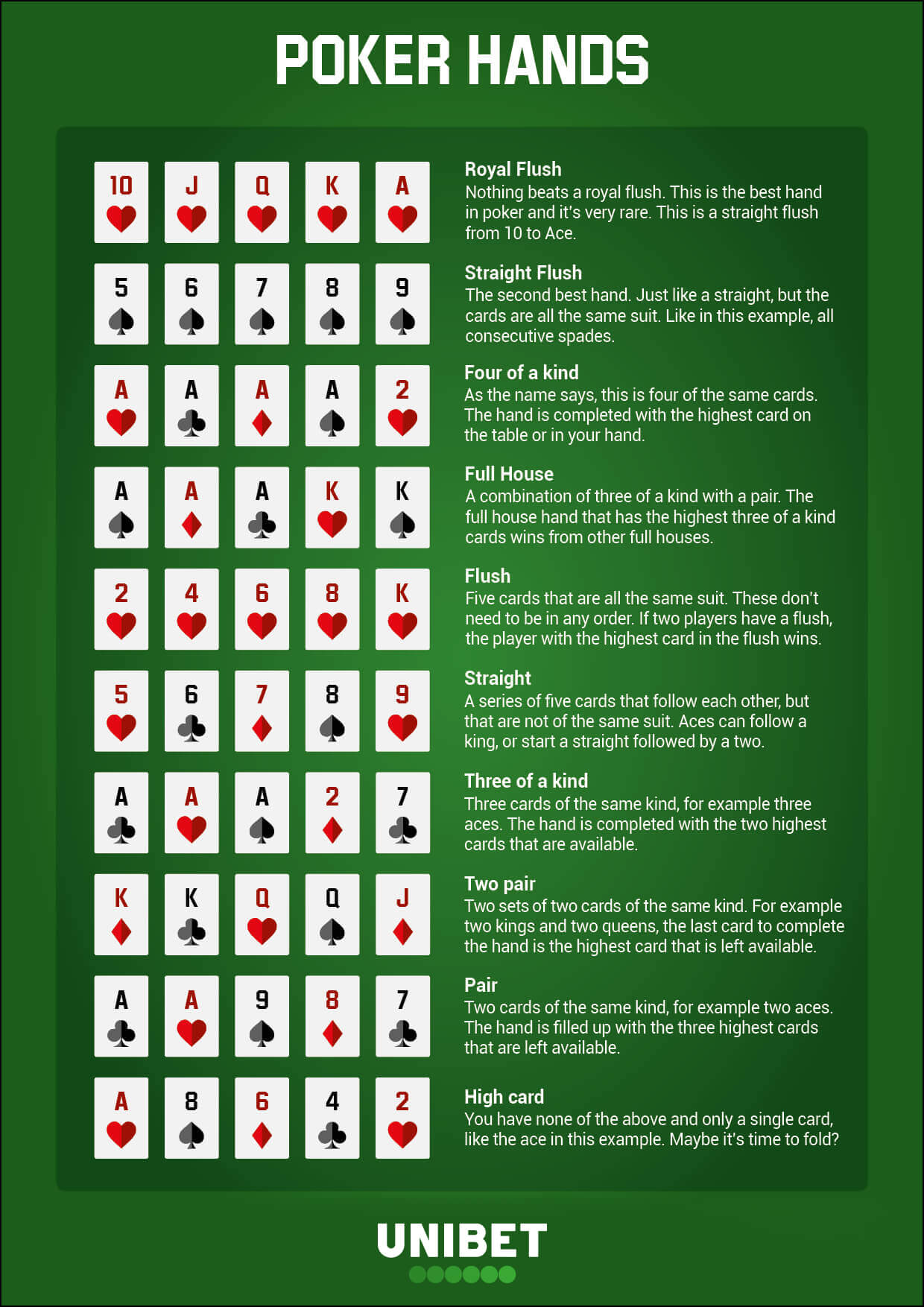
Poker is a card game in which players place bets on the outcome of a hand. While much of the game is based on chance, poker also involves skill, psychology and game theory. Players can make a profit by raising bets on their own hands and by bluffing other players. Players place bets in order to win a pot, the amount of money raised by all players. The amount of the pot is based on the rank of the player’s hand.
There are many different forms of poker, but all share some fundamentals. First, a player must pay a forced bet, usually an ante or a blind bet (the amount varies by game). The dealer then shuffles and deals the cards to each player one at a time, beginning with the player on their left. Cards may be dealt either face up or down.
During each betting round, the players decide whether to call, raise or fold their hand. The person with the highest poker hand wins the pot. The best hand is a royal flush, consisting of five cards of the same suit, ranked ace through ten. Other high hands include straight, four of a kind, and three of a kind.
To increase your chances of winning, learn how to read the game. This includes understanding the rules and basic strategy tips. In addition, you must be able to calculate your points and keep a good poker face. There are many books and websites that can help you improve your poker skills.
If you want to play poker, it is best to start at the lowest stakes possible. This way, you can get comfortable with the game without risking a lot of money. In addition, you will be able to practice against weaker players and learn the game better. However, it is important to remember that as you play higher stakes, your skill level will increase.
In most games, players must ante a small amount of money (the exact amount varies by game). They then place bets into the middle of the table in order to win the pot. Each player must place chips into the pot that are at least as high as the total contribution of any player before them. Depending on the game, players may also be required to pay into a pot set aside for side wagers called the “kitty.”
Over time, the numbers you see in training videos and software will become ingrained in your poker brain. You will develop an intuition for things like frequencies and EV estimation. This will allow you to think more clearly at the table and make better decisions. Ultimately, you will be able to achieve a greater level of success at poker.